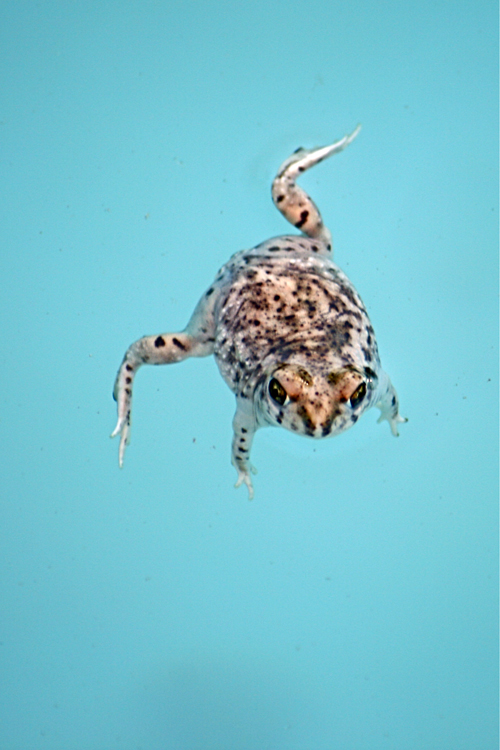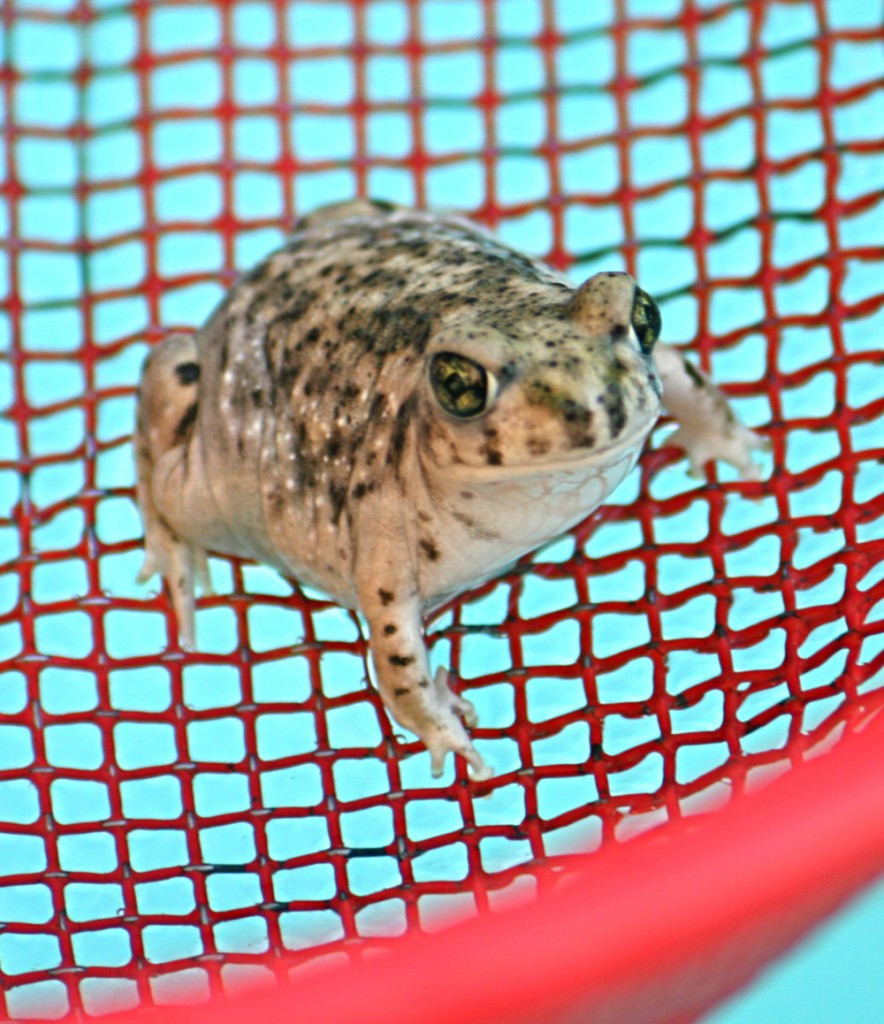Subsequent “toad” extractions
‘Tis the Season.
Every morning when I get up, I check the pool for unintentional overnight swimmers. Usually there’s nothing,  but when there is it’s often a sunspider, or a scorpion, or beetle; sometimes it’s a hapless mammal like a pocket mouse. Sometimes it’s a rescue, sometimes a recovery, to use the clear but courteously oblique terms of search and rescue.
but when there is it’s often a sunspider, or a scorpion, or beetle; sometimes it’s a hapless mammal like a pocket mouse. Sometimes it’s a rescue, sometimes a recovery, to use the clear but courteously oblique terms of search and rescue.
>> hatchling afloat contemplating options, fully aware of looming predators, uncertain of their intentions
This time of year — at least this year — it’s spadefoot hatchlings. We seem to have successfully hosted a batch of hatch of these Sonoran native amphibians (toad-like but technically not, more accurately referred to as a toad-like amphibian — the way a javelina is not an actual pig, Sus, but a pig-like mammal). We are happy and proud, of course, but a little surprised, since we thought our local population of Couch’s spadefoots had dried up. Up to this point, we weren’t sure our 2008 efforts at re-introduction (read here) positively took, and we haven’t heard their sheep-like bleating mating calls this year, despite several seemingly appropriate thunder-blasting, downpouring monsoon storms of the sort we’re assured is considered by “toads” to be romantically stimulating.
Yet here they are in our yard, Couch’s spadefoot hatchlings, and so the resulting morning pool check is carried out. Usually this is what happens: I go out, check the strainer, the hose, the tile water line, the open water, the bottom (for victims, although we’ve never found a drowned toad), and fail to find a “toad”. Then an hour later E goes out and announces, “A! ‘Toad’!” (“Janet! Donkeys!”) From this we know that either a) the toads are jumping in after sunrise, or b) I’m blind to Couch’s spadefoots. Since a tiny ‘toad’ throws hard-to-miss ripples from its bi-lateral, efficient  frog-kicking tour around the perimeter, we think it must be a). a) is the more desirable answer because it means that the “toadlets” aren’t spending a long time in a water feature they can’t climb out of (we do have various ramp-like structures set up for self-extraction from the pool, but smaller animals don’t always find their way to them). Answer a) also means I’m not blind to “toads.”
frog-kicking tour around the perimeter, we think it must be a). a) is the more desirable answer because it means that the “toadlets” aren’t spending a long time in a water feature they can’t climb out of (we do have various ramp-like structures set up for self-extraction from the pool, but smaller animals don’t always find their way to them). Answer a) also means I’m not blind to “toads.”
<< scooped up in a kitchen strainer, not an inch long
The paddler we rescued this morning — pictured in this post, both images — appears to be a lighter “toad” than the last one rescued, with more highly contrasty spots, which is an indication we’re probably dealing with a batch rather than a one-off. Hurray spadefoots! You’re welcome to use our overgrown, puppy-dog-free yard as a nursery any time!
(Photos A.Shock — they’re large files, click for better look. Check out the blood supply in delicate veins on throat in bottom photo, and a glimpse of dark spade on rear feet of upper photo)

In the summer we stay in the Berkshires in a house with a pool. Every morning my husband runs out to perform rescues. Frogs, mice, you name it!
Yes, Roberta — these pools, although lovely in hot weather, require constant vigilance! Luckily my studio faces ours, and during the day I can keep an eye open for flounderers. I once watched one Rock Squirrel push another — very deliberately — into the water in a side-by-side wrestling match. I was about to run for the pool skimmer when the bedraggled loser rescued itself by scampering straight up the pool wall onto the deck, no problem: Rocket J. Squirrel for reals!